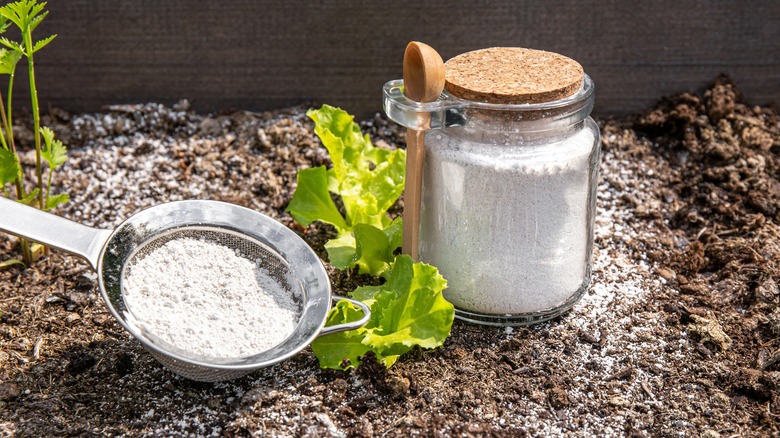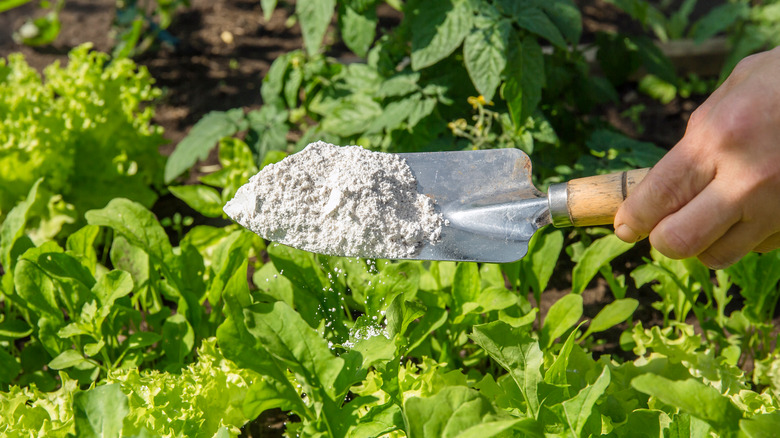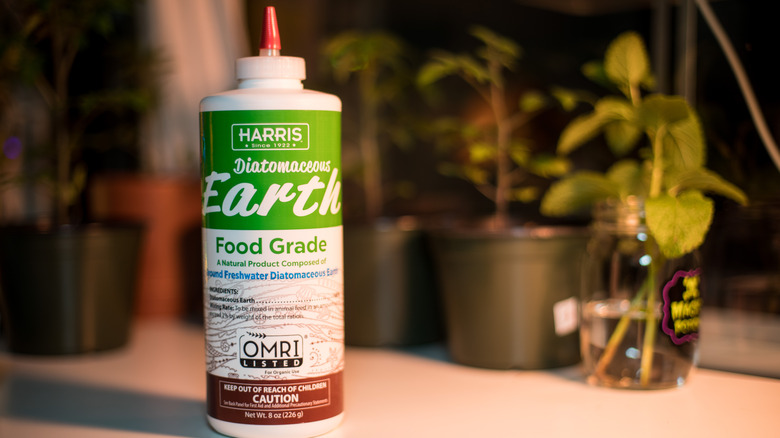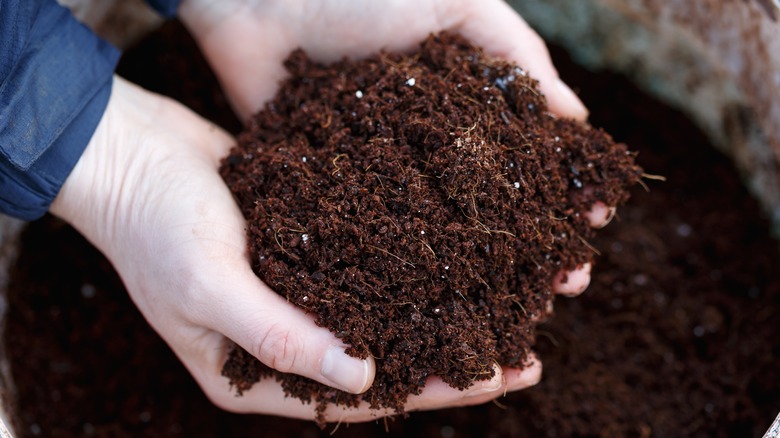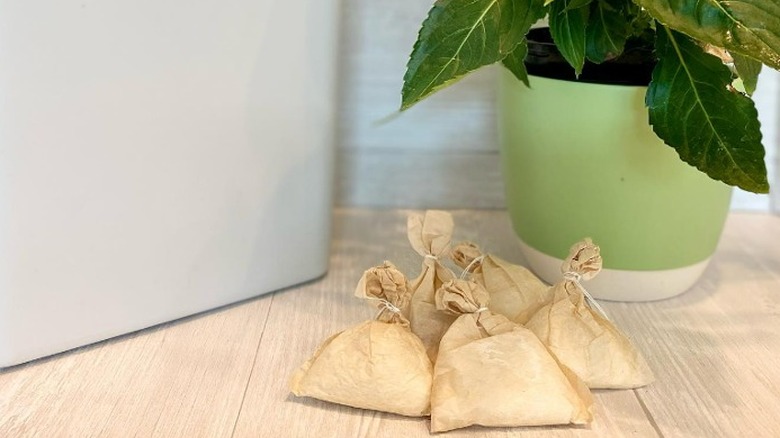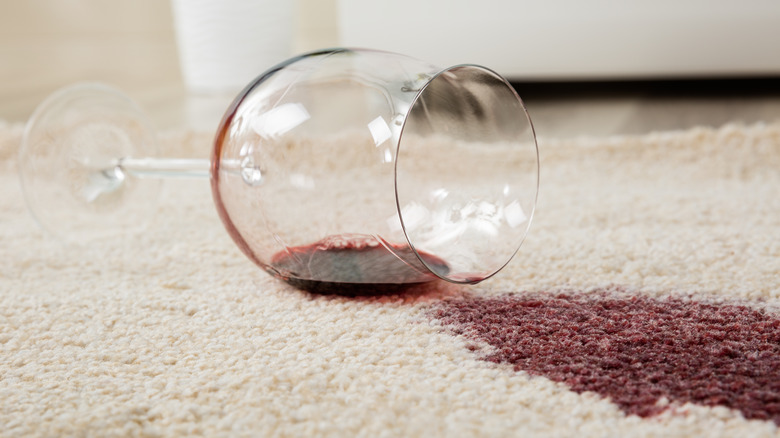What Is Diatomaceous Earth And What Is It Used For?
Diatomaceous earth is a naturally occurring sedimentary rock made up of the microscopic fossilized remains of single-celled creatures called diatoms. Because of its physical properties, which include an abrasive texture and high porosity, diatomaceous earth can be used in multiple household applications. These include but aren't limited to helping soil maintain proper moisture levels, keeping creepy crawlies under control, cleaning and removing stains, and helping keep odors at bay.
But how is it made? Over a long period, the hard silica-based shells of deceased diatoms build up on the bottom of bodies of water. This results in deposits that are mined and then ground into a fine powder known as diatomaceous earth. While this powdery substance is considered nontoxic (except if it's labeled as filter grade), it's still important to use food-grade diatomaceous earth, which is safe for humans and pets if ingested. Erring on the side of caution, it's also recommended that you wear a mask to avoid inhaling any errant dust particles, and always store it in a dark, dry area to maintain its effectiveness. If moisture gets in, then you'll be left with a solid brick, which won't be of much help to you.
Outdoor and indoor pest control
Diatomaceous earth is made from fossilized algae remains, and because it's nontoxic, it can be used both inside and out to keep creepy crawlies at bay. This miraculous powder disposes of bugs in two ways. The first is by cutting, the second is dehydration. While we can't see it with the naked eye, these microscopic particles have sharp, razorlike edges that cut through the insect's exoskeleton. When an insect's moisture-laden fats and oils are exposed to this highly absorbent dust, it dehydrates from the inside out.
When used for preventative measures, diatomaceous earth dries up the normally moisture-rich habitat that bugs and insects thrive in. It's recommended to sprinkle it in locations where you actually witness activity as opposed to where you last saw insects entering your home. For outside home protection, pepper a thin layer around the perimeter of your home, and inside your dwelling, apply it along baseboards, cracks, and crevices or other places where bugs might enter. Remember that a little goes a long way. Diatomaceous earth is effective against cockroaches, bed bugs, fleas, ticks, centipedes, ants, and other crawling insects.
Plant pest control
It's only natural that bugs would want to bunk with your favorite houseplants. After all, the soil is moisture-rich and laden with nutrients, and depending on what the creepy crawly eats, your plant baby might also be a source of food. Luckily, diatomaceous earth is an efficient way to keep your beloved plants safe and happy. To prevent flies and gnats, sprinkle a bit of the magic stuff at the base of your houseplants. This deters flying pests from laying their eggs in the soil and also acts as a defense system against other crawling insects, including the soft-bodied varieties. You can dust it on the leaves of your plants if pests are snacking on them, but avoid dusting flowers with the stuff, lest any helpful pollinators visit.
If bugs are reaping the benefits of your vegetable garden and leaving nothing behind for you to sample, try dusting a bit of diatomaceous earth on and around the base of the plant as well as on the surface of the surrounding soil. Your plants will thank you for it, and you'll be able to enjoy your tasty bounty. Just remember that diatomaceous earth doesn't discriminate and hurt beneficial bugs, too, so use this product at your discretion.
Moisture retention in potting soil
Adding diatomaceous earth to your dirt not only prevents bugs from taking up residence near your plants, but it conditions your soil, too. Diatomaceous earth is incredibly beneficial because it contains trace minerals like calcium, magnesium, phosphorous, and of course, silicon, which are all necessary for proper plant growth. When mixed in with soil, these nutritious elements slowly release over an extended period of time, which means the substrate is constantly being rejuvenated.
The porous nature of diatomaceous earth also means that it easily absorbs and holds onto water. Because of its ability to retain water, adding diatomaceous earth to your soil makes it more resistant in drought-affected environments. It also helps improve plants' structure and can be especially beneficial in sand or clay substrates. For houseplants, it's preferable to use a 9-to-1 or 8-to-2 ratio of spotting soil to diatomaceous earth. In your garden, Grow Organic states that for every 10 square feet, you should mix 5 pounds of diatomaceous earth into the top 12 inches of soil.
Natural deodorizer
Due to its natural absorbent properties, diatomaceous earth makes a great all-natural deodorizer. To remove smells from your carpet, sprinkle a healthy amount of diatomaceous earth over the area you intend to vacuum, like baking soda. Work it into the carpet with your hands so that no clumps remain, and leave it there for 24 to 48 hours, depending on how odoriferous the area is. Because of its powdery nature, it's recommended to wear protective eyewear, a mask, and gloves, just in case. While it's not toxic, it can still cause sinus and skin irritation. After the allotted time has passed, suck it up with your vacuum and empty it in an outdoor trashcan. For an all-natural scented carpet cleaner, try mixing in some dried lavender flowers.
Make an eco-friendly refrigerator odor eliminator by mixing diatomaceous earth, baking soda, and an essential oil of your choice. Place your mixture in a small glass jar, sans lid, near the back of your fridge, and replace it every one to two months. For extra security, you can punch a few holes in the lid and cap your odor-eliminating concoction. If your shoes are a bit funky, take the above mixture and spoon it into a paper coffee filter. Tie it off and place it inside your shoes to absorb and eliminate any possible stink.
Cleaning and stain removal
Due to its abrasive nature, diatomaceous earth is a great all-natural all-purpose cleaner and polisher. It can safely be used to clean your stovetop, countertops, and sinks without the fear of scratching these surfaces. Simply sprinkle some of the powder into a bottle or bucket with a good deal of water and some vinegar or lemon juice. Apply it and use a damp sponge or soft cloth, like microfiber, to scrub it in a circular motion. Wipe it dry with a clean cloth, and you're ready to go. You can also use this method to clean your bathroom sink and tub. While it's deemed safe for use in drains, you might want to err on the side of caution and dispose of any residual diatomaceous chunks in the garbage. You don't want to risk any potential clogs (and your garbage disposal will surely thank you for it).
Because of its high absorbency, diatomaceous earth can also be used to remove tough stains, like grease or oil. If you catch a spill early on, sprinkle diatomaceous earth over the wet stain and allow it to sit until it dries up. Vacuum up the powder, and repeat the process as necessary.
